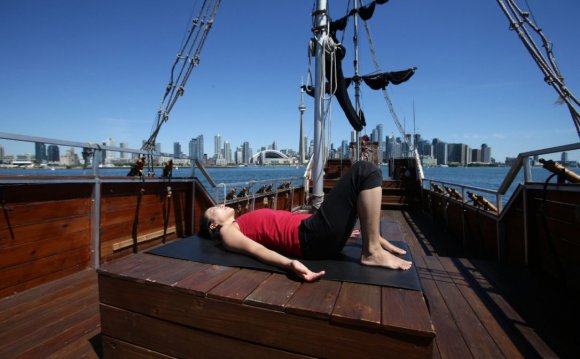
Aqua Yoga is a fun and effective practice that adapts traditional Yoga postures to an aquatic environment. From a physical standpoint, practicing asanas (poses or postures) in the water causes less stress on the joints and provides a feeling of success by allowing students to experience postures they may be unable to achieve on land. However, in some postures, the resistance of the water creates more opportunity to build strength.The aqua environment may allow students to achieve a greater range of motion, increasing muscle flexibility. From a mind-body standpoint, water is very comforting and nurturing, which enhances relaxation and readies our minds for a deeper meditative experience.Yoga has been linked to decreased stress, heart rate, blood pressure, fatigue and depression – and a lower risk of all the diseases that accompany these risk factors. Many Yogis find better sleep, more confidence, a more positive outlook on life, improved moods, and fewer addictive behaviors than they experienced prior to engaging in Yoga.
Aqua environments are calming and inviting. There is a natural serenity associated with water, and this improves the mind-body connection and readies the mind for a more peaceful, meaningful meditation. Final Savasana (corpse pose) and breathing in Mountain Pose are extremely nurturing in the tranquility of the water.
One reason that Yoga is so helpful at reducing stress is because we focus intently on deepening our breath and bringing awareness to our breath. This invokes our parasympathetic (relaxed) nervous system and helps us develop a sense of detachment in a world that sometimes feels out of control, or to which we feel totally overwhelmed and attached at every turn.
Not only can Yoga help us focus on deep breathing and create space in our day when we are heavily focused on our breath, but Aqua Yoga gives us an additional benefit because standing in water while performing Yoga postures adds uniform resistance against the abdominal muscles. When we resist abdominal expansion, we naturally resist diaphragmatic contraction. Breathing while standing in water requires the diaphragm to overcome a strong water pressure evenly distributed over the abdomen. What a wonderful strength training exercise for the diaphragm!
The number of Yoga postures that can be easily adapted to the water is phenomenal. We introduce you to many Aqua Yoga poses in our Aqua Yoga Teacher Training Workshops. Once you get a feel for the poses, you will probably start incorporating some of your own postures into this peaceful practice!
Click here to see . If you are ready to register for a workshop/training or purchase a home-study or online workshop, please go to our registration page. You can view details of each option which will show you the prices as well as dates and cities for each workshop.









